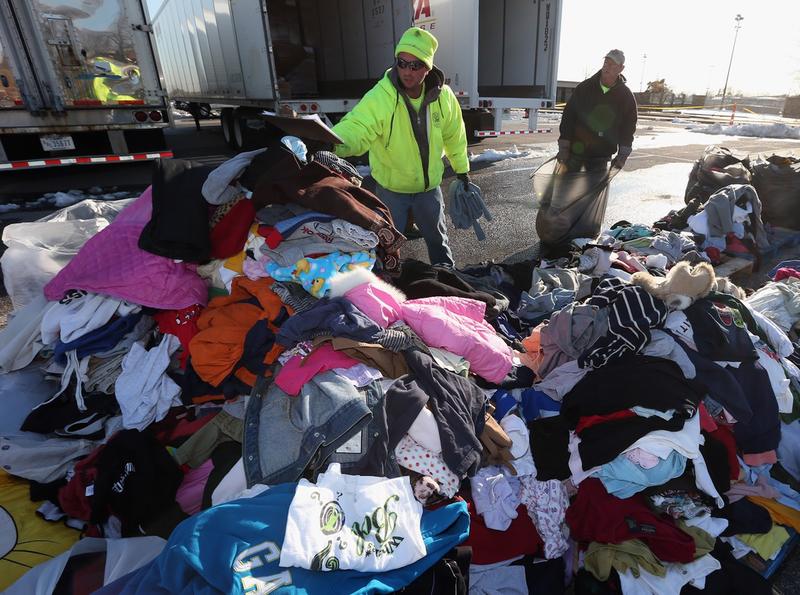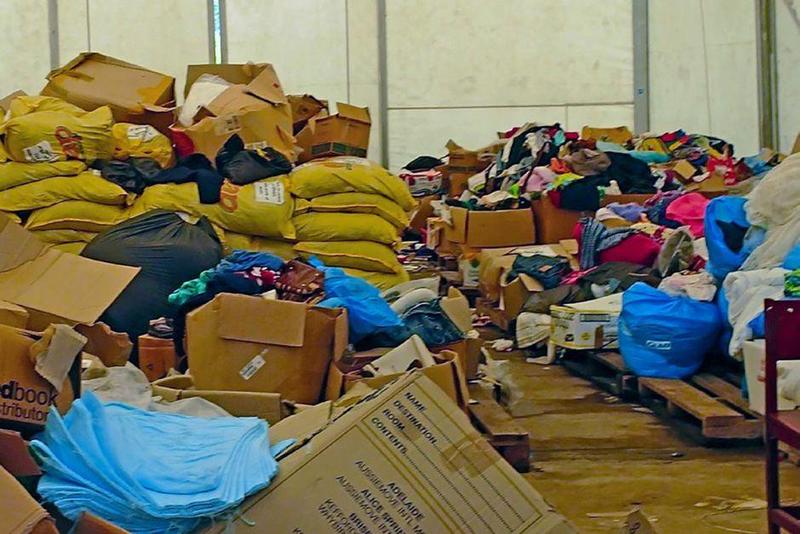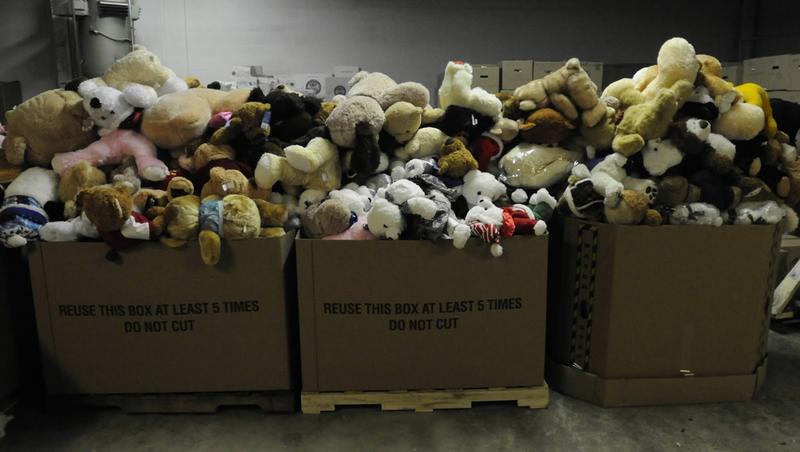Donate to Make America Grteat Again

In many disasters, people lose their homes and livelihoods. As a result, others want to help and donate whatever they can, including flashlights, warm clothes, blankets, bottled h2o, canned food and toys.
Only regime report that a majority of the donations they receive aren't needed, and so what happens to these items? Allow's take a look at the effects of mass donations, what not to donate after a disaster and what you can do to truly help.
Not All Good Intentions Are Good Ideas
The world is susceptible to disasters. For instance, Hurricane Harvey wreaked havoc in Texas and Louisiana, resulting in astringent flooding and endless deaths. In 2011, an earthquake and tsunami caused catastrophic damage in Japan, leading to thousands of deaths and missing persons. People afflicted by the disasters lost everything, compelling others around the world to send all types of donations.

Notwithstanding, these heartfelt gestures may practise more harm than good. Donations are oft left rotting in warehouses or overwhelming local landscapes. Mass donations negatively impact locals, recovery efforts and even the environment. Too, picture the massive carbon footprint created by the planes, ships, trains and trucks used to transport the items.
When people are suffering, grief and empathy movement others to take action past sending as many donations as they can. But in reality, these items simply cause a second disaster.
"Mostly after a disaster, people with loving intentions donate things that cannot be used in a disaster response, and in fact may really exist harmful. And they have no idea that they're doing it," explains Juanita Rilling, one-time director of the Center for International Disaster Information in Washington, D.C.
The Worst Things to Donate
Clothes: It's natural to believe that those who've lost everything must need clothes. But the U.S. Federal Emergency Direction Bureau (FEMA) calls clothing one of the least useful donations for disaster relief. Most clothes are but left rotting on roadsides, in warehouses and even on aeroplane runways.

Rilling recalls speaking with a logistics adept when a plane with supplies couldn't state because dress were blocking the runway in Honduras. "It's in boxes and bales. It takes up yards of infinite. Information technology can't be moved. 'Whose wearable is it?' He said, 'Well, I don't know whose it is, just at that place's a high-heeled shoe, simply one, and a bale of winter coats.' And I thought, wintertime coats? Information technology's summer in Honduras," she said.
Huge donations of wearing apparel as well hurt Florida in 1992, when Category 5 Hurricane Andrew destroyed the state. The damaged streets and highways made information technology impossible to send the donations. As a result, the apparel were dumped on the sides of the roads, mutating into smelly, wet mush throughout Florida.
Blankets: Later on a disaster strikes, a big, warm blanket sounds like a comforting donation. In reality, it could go a hindrance to cleanup efforts. For instance, after Japan was devastated in 2011 by a violent earthquake, relief workers complained about "also many blankets" and "too many clothes" delaying recovery work.
Toys: In times of tragedy afflicting children, people recall toys volition elevator families upwards. However, toys aren't helpful at all. In 2012, a mass shooting ravaged Sandy Claw Elementary School and the unabridged town of Newtown, Connecticut. People sent the school about 67,000 teddy bears and thousands of school supplies, bicycles, sleds and toys.
The donations were thoughtful, simply locals believe the town needed better back up and resources. Matt Cole, a customs acuity organizer, responded, "A teddy bear is wonderful, simply a teddy bear tin't pay for counseling, a teddy bear can't pay for a funeral."
Food and H2o: Fifty-fifty sending canned nutrient and bottles of water isn't a expert idea. Each item must be examined and sorted when it reaches the destination. This takes upward valuable time during relief efforts. It's also extremely expensive.
Donating 100,000 liters (26,417 gallons) of water allows xl,000 people to drink water for 1 day. However, this type of donation is costly if it's sent to a different country. Co-ordinate to Rilling, "This corporeality of h2o to transport from the United States, say, to West Africa — and people did this — costs about $300,000. Simply relief organizations with portable water purification units can produce the same corporeality, 100,000 liters of water, for virtually $300."
The Best Things to Donate
Money: Experts highly encourage fiscal contributions as donations; fifty-fifty a modest donation tin aid tremendously. It's best to transport cash to accredited organizations and then the donation doesn't terminate up in the incorrect hands.

Charity Navigator is a nifty identify with which to check the legitimacy of charitable organizations. The visitor assesses the financial statements of the charities and rates them. For instance, it's evaluated the American Red Cross, GlobalGiving, Americares and All Easily and Hearts. The site also reviews food banks and shelters.
Other Options: If you don't have a lot of items to donate, consider having a garage auction and donating the profits. Experts besides propose volunteering at local charities in the event of a disaster.
Source: https://www.faqtoids.com/knowledge/really-happens-donations-disaster?utm_content=params%3Ao%3D740006%26ad%3DdirN%26qo%3DserpIndex
0 Response to "Donate to Make America Grteat Again"
Post a Comment